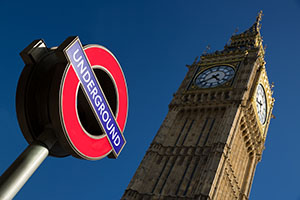 Although it feels like last year since we last visited this problem, it was in fact 2011 when the USA government was close to shut down as a consequence of the two main parties not reaching an agreement to raise the national debt ceiling. Many of us thought at the time that all Obama’s democrats need do was to explain to their Republican antagonists that; “if they didn’t raise the debt ceiling their investments would crash” and they’d agree to a raise quicker than anyone could say “NASDAQ”.
Although it feels like last year since we last visited this problem, it was in fact 2011 when the USA government was close to shut down as a consequence of the two main parties not reaching an agreement to raise the national debt ceiling. Many of us thought at the time that all Obama’s democrats need do was to explain to their Republican antagonists that; “if they didn’t raise the debt ceiling their investments would crash” and they’d agree to a raise quicker than anyone could say “NASDAQ”.
The debt ceiling was duly raised on August 2nd 2011 by between $2.1 and $2.4 trillion taking the overall debt ceiling to $16.7 trillion, with the expectation that this would last until 2013. On August 5th 2011, three days after the debt ceiling was agreed, the ratings agency Standard and Poor’s lowered the USA bond rating for the first time in its history, the shock of this event caused the main USA index the DJIA to drop by 635 points.
USA debt snapshot
For the historians amongst us the USA has actually raised its debt ceiling by 70 times since 1960. And technically the USA breached its current debt ceiling back in May 2013, since which time it’s been raiding pots of ‘loose change’ (such as govt pensions) in order to pay its obligations. According to a study by the National Bureau of Economic Research the USA government has $70 trillion in off-balance sheet liabilities as of 2012 and the debt versus GDP ratio is rising. According to government statistics, it currently stands at 104.8%. In the year Obama was born, it was under 60%. According to many economists if you incorporate the off-balance-sheet liabilities, the current debt-GDP ratio of the USA is over 500%.
The fix
So here we are, once again mired in the debt ceiling issue, which will temporarily displace the taper as the key focal point for the mainstream financial press to wring their hands over until a solution is found. Which it will be given that raising the ceiling is above party politics. It affects all government departments and technically, if it’s not raised, simple but deadly serious issues would manifest, such as government employees not being paid. The suspicion is that the Republicans will use this crisis to make a drama and squeeze some budgetary concession/s from Obama, such as his much maligned healthcare programme. We’ll watch from the sidelines as this drama unfolds, stunned that such a serious issue (with only one solution) can come down to a “who blinks first” charade.
Market snapshot at 10:00 UK time
In the overnight/early morning session the Nikkei index closed down marginally by 0.07%. The Hang Seng closed down 0.82% and the CSI by 0.82%. The ASX 200 closed down 0.35%. In European markets the STOXX is up 0.24%, the FTSE up 0.07%, CAC up 0.36% and the DAX up 0.16%. The Athens exchange is up 0.02%.
ICE WTI oil is down 0.43% at $103.14 per barrel, NYMEX natural is down 0.06% at $3.6 per therm. COMEX gold is down 0.30% at $1328.81 per ounce and silver on COMEX is down 1.20% at $21.60 per ounce.
Looking towards the New York open the DJIA equity index future is up marginally by 0.03%, the SPX is down marginally by 0.03%, whilst the NASDAQ equity index future is up 0.12%, suggesting that USA markets will open up marginally when New York’s bell rings in the session.
Bonds
The yield on the UK’s benchmark 10-year gilt has fallen by four basis points, or 0.04 percentage point, to 2.87 percent in the London session, after climbing to 3.05 percent on Sept 11th, the highest level since July 2011. The 2.25 percent bond due in September 2023 advanced by 0.33, or 3.30 pounds per 1,000-pound ($1,598) face amount, to 94.66. The rate on similar-maturity U.S. notes slipped one basis point to 2.69 percent, after dropping five basis points in the previous two trading days.
Forex focus
The dollar fell 0.1 percent to $1.3510 per euro early in the London session after rising by 0.2 percent on Monday, the biggest gain seen since Sept 5th. It rose 0.3 percent to 99.11 yen, after falling 0.6 percent during the previous two days. Europe’s shared currency advanced 0.4 percent to 133.90 yen, after declining 0.7 percent yesterday. The dollar is set for a 3.7 percent quarterly drop versus the euro, the most since the period through March 2011. The greenback has been little changed versus the yen in this quarter.
The dollar snapped its two-day advance versus the euro as the U.S. government moves closer to a shutdown with lawmakers wrangling over the debt limit and markets analyzing the monetary policy.
The Australian and New Zealand dollars dropped versus the majority of its major peers as Asian stocks retreated from a four-month high. Australia’s dollar declined by 0.2 percent to 94.17 U.S. cents. New Zealand’s kiwi weakened 0.5 percent to 83.29 cents.
The Australian dollar was little changed at NZ$1.1272 in the Sydney session from yesterday, after touching NZ$1.12 on Aug 1st, the weakest level seen since October 2008. Australia’s dollar traded 0.6 percent from an almost five-year low versus its New Zealand counterpart on bets interest rates at the nations’ central banks will diverge.





